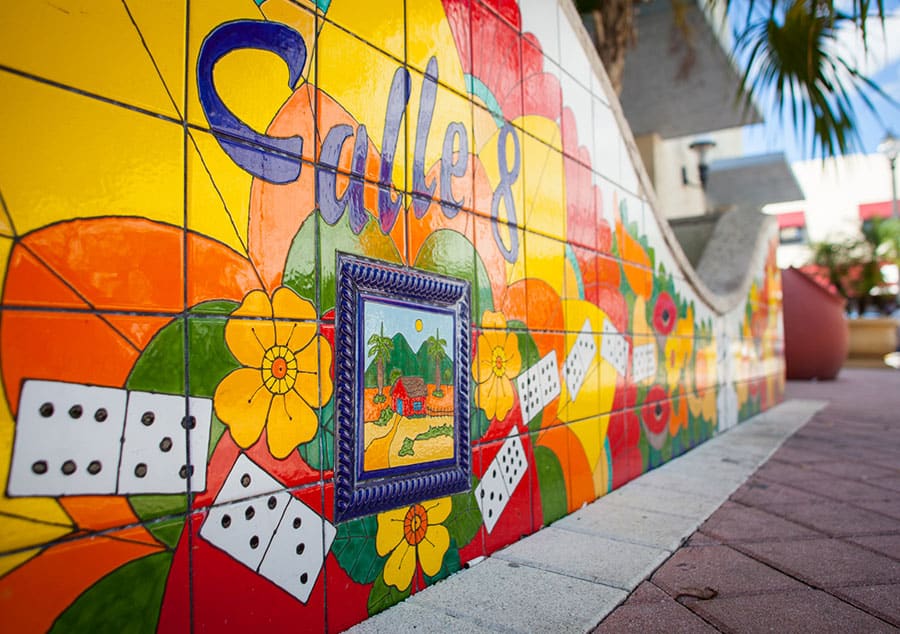In Miami, the iconic neighborhood of Little Havana is a vibrant center of Cuban and Caribbean life, representing the enduring spirit and traditions of its people. With Miami Food Tours, explorers and foodies alike are invited to traverse this lively district, experiencing a world where every corner reveals a new facet of Cuban and Caribbean legacy.
In Little Havana, the air is infused with the aroma of freshly brewed Cuban coffee and the rhythmic beats of salsa music. The streets, lined with colorful murals and non-stop activity, tell a story of a community that has maintained its cultural identity while embracing the evolving dynamics of Miami. This article explores the depths of Little Havana’s Cuban and Caribbean influences, exploring how these rich cultures have shaped the neighborhood and also the culinary culture that continues to draw visitors from around the globe.
From the oldest open-air tropical fruit market to the hidden courtyards on Calle Ocho, Little Havana is an experience. A journey through its streets is an intimate encounter with history, tradition, and the flavors that define a community.
Historical Context of Little Havana
The story of Little Havana begins with a significant historical event: the Cuban Revolution of 1959. This political upheaval sparked a mass exodus of Cubans, many of whom sought refuge in Miami due to its proximity and existing Cuban community. The U.S. government’s establishment of the Freedom Tower as the Cuban Assistance Center in the early 1960s further anchored this wave of immigrants in Miami, providing essential services and aid for those fleeing political or religious persecution. This migration not only reshaped the demographic landscape of Miami but also marked the beginning of Little Havana’s transformation into a hub of Cuban culture and community.
Before this influx, the area that would become Little Havana was divided by Southwest Eighth Street, with the northern part known as Riverside and the southern as Shenandoah. Initially a largely Jewish neighborhood, the area saw its original residents move farther west and north as the new Cuban community established itself. This new settlement brought with it a wealth of cultural and economic contributions, gradually transforming the neighborhood into a vibrant center of Cuban life.
As Cubans settled and began to integrate into American society, they established numerous businesses and media outlets catering to the Spanish-speaking community. This shift not only altered the economic landscape of Miami-Dade County but also brought about changes in its social fabric. The Cuban community’s influence grew to such an extent that by the 1970s, Spanish had become a dominant language in Miami, reflecting the profound impact of Cuban culture on the city.
Later waves of Cuban immigration, notably the Mariel boatlift in 1980 and the Cuban rafter crisis in 1994, further cemented Miami’s status as a central destination for Cuban migrants. These successive waves of Cuban immigrants not only maintained but also enriched the cultural and economic vibrancy of Little Havana. This continued influx has been a constant feature of Miami’s demographic landscape, with the most recent surge occurring during the 2021–23 Cuban migration wave.
In the subsequent years, Little Havana expanded its cultural diversity with the arrival of immigrants from other parts of the Caribbean and Central America, including growing Nicaraguan and Honduran populations. Despite these changes and the challenges of gentrification, Little Havana has retained its Cuban legacy, continuing to be a symbolic and cultural focal point for the Cuban diaspora in Miami.
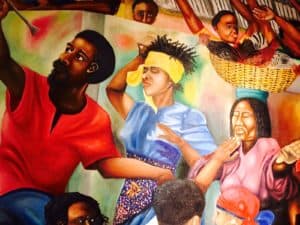
Cuban Influence on Little Havana
Little Havana, the heart of Cuban culture in Miami, holds the essence of Cuba very much alive in its food, music, architecture, and social life. The neighborhood is a celebration of the Cuban heritage that has significantly shaped Miami’s cultural landscape.
Cuban Cuisine
The food of Little Havana is rich with traditional Cuban flavors. Iconic Cuban dishes such as Ropa Vieja, Cuban sandwiches, and a variety of pastries are staples here. Notable spots like Old Havana Restaurant transport you straight to Cuba with their classic Cuban sandwiches, while Fruteria los Pinarenos, a family-run café and fruit store, offers a taste of the island with its freshly squeezed sugar cane juice. Another beloved Cuban delicacy, croquetas – deep-fried, ham-filled appetizers – are a local favorite, particularly at places like Sergio’s. These culinary offerings are not just food items; they are a celebration of Cuban culture and a way of preserving the culinary traditions of the Cuban community in Miami.
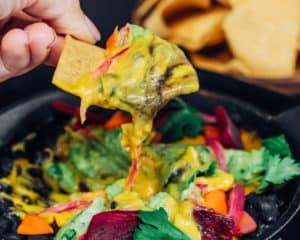
Music and Dance
Cuban music and dance are integral parts of the cultural fabric of Little Havana. The streets of this lively neighborhood often resonate with the sounds of salsa, mambo, and son Cubano, reflecting the musical heritage of Cuba. Places like Viernes Culturales (Cultural Fridays) offer a glimpse into the neighborhood’s vibrant music scene, with outdoor musical performances and cultural activities that showcase the thriving arts scene and the joyous spirit of the Cuban community.
Architecture and Street Art
The architectural landscape of Little Havana also tells the story of its Cuban roots. The South River Drive Historic District within Little Havana, added to the National Register of Historic Places, showcases the city’s oldest vernacular frame buildings near the Miami River. These buildings, along with the Riverview Historic District, comprise architectural styles such as Bungalow, Mission, Mediterranean Revival, and Miami Modern, reflecting the diverse cultural influences that have shaped the neighborhood. The colorful murals and street art adorning the walls of Little Havana are another expression of its rich cultural history, often depicting iconic Cuban figures and scenes from Cuban life, further solidifying the neighborhood’s identity as a bastion of Cuban culture in Miami.
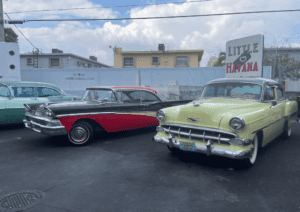
Caribbean Contributions to Little Havana
Little Havana, while predominantly recognized for its Cuban heritage, is a mosaic of various Latin American influences, including significant contributions from the broader Caribbean region. This rich blend of cultures has manifested in various aspects of the neighborhood’s life, from its culinary scene to its vibrant street life.
Culinary Influence
The Caribbean influence in Little Havana is most palpable in its culinary scene. Miami’s gastronomy has been significantly enriched by the presence of Cuban and other Latin American immigrants, including those from Caribbean nations. The fusion of Cuban and Caribbean flavors creates a unique and exciting array of dining experiences. Restaurants and cafes in Little Havana often feature dishes that combine Cuban staples with Caribbean twists, offering a culinary journey that reflects the neighborhood’s diverse cultural makeup.
Cultural Integration and Festivals
Cultural integration is evident in the various community events and festivals celebrated in Little Havana. The neighborhood hosts festivals that blend Cuban traditions with elements from other Caribbean cultures, creating lively and inclusive celebrations that attract people from all backgrounds. These events are an expression of the neighborhood’s dynamic cultural landscape and serve as a platform for different communities to showcase their heritage.
Artistic and Social Influence
The influence of the Caribbean is also visible in the artistic expressions found throughout Little Havana. From street art to music, the Caribbean’s vibrant energy is interwoven with Cuban rhythms and styles. This melding of cultures is not just an artistic phenomenon but also reflects in the social interactions and lifestyle of the residents. The neighborhood’s street life, marked by colorful murals, music, and social gatherings, embodies the spirited essence of both Cuban and Caribbean cultures.
The Role of Food in Cultural Expression in Little Havana
In Little Havana, food is a lively expression of the Cuban and broader Latin American culture. The neighborhood’s gastronomy offers a variety of flavors that are deeply entwined with its cultural identity and history.
Little Havana’s restaurants and cafés are cornerstones of this cultural expression. Iconic spots like Versailles, which has been a Little Havana institution since 1971, serve classic Cuban dishes like ropa vieja and Cuban sandwiches, embodying the traditional Cuban cuisine. Similarly, other eateries like El Cristo and Azucar Ice Cream Company bring to the table Cuban-inspired flavors like cafe con leche and guava and cheese ice cream, showcasing the innovative takes on traditional Cuban recipes. These culinary establishments do not just offer food; they offer a taste of Cuban history and tradition, making them integral to the cultural fabric of Little Havana.
Moreover, the area is known for its vibrant culture and history. Strolling down Calle Ocho, one can explore various shops and galleries or visit cultural centers like the Little Havana Visitors Center or the Cubaocho Museum and Performing Arts Center, which further enrich the cultural experience of the neighborhood.
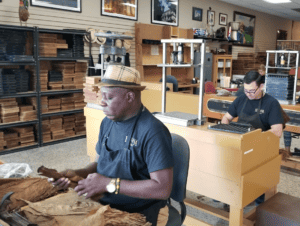
The Miami Food Tours in Little Havana offer an array of unique experiences, each narrating a distinct aspect of the neighborhood’s Cuban and Caribbean influence. From the enjoyment of a traditional guava pastry in a local bakery to witnessing the skillful craft of cigar rolling, the tour traverses the historic and culinary landmarks of Calle Ocho. Participants immerse themselves in the cultural atmosphere of the Cuban district, beginning with a refreshing tropical juice at the oldest open-air fruit market in Little Havana. The journey culminates with a family-style Cuban meal in a tranquil courtyard, reflecting the communal essence of the area. Each stop is a gateway into the vibrant life and history of Little Havana.
From its flavorful cuisine and rhythmic music to its colorful streets, Little Havana offers a cultural richness that goes beyond the typical tourist experience. We invite you to book the Miami Food Tours for a genuine immersion into this distinct neighborhood. This tour is an opportunity to experience the lively legacy of Little Havana.
